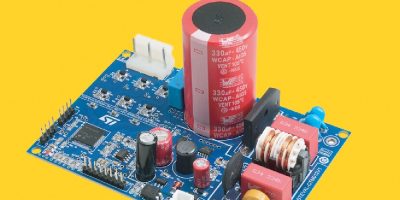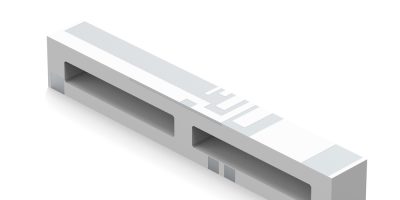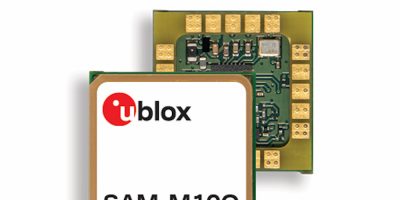Two reference designs from STMicroelectronics have been developed to simplify building complete industrial or home appliance motor drives for compressors with its STSPIN32 motor control system in package (SiP).
Each integrates the motor controller with a three-phase inverter to power the motor, and an offline converter and auxiliary circuitry. A production-ready PCB design and motor-control firmware are also included.
The STEVAL-CTM011V1 targets general industrial compressors up to 250W and the STEVAL-CTM012V1 meets the stringent eco-design regulations for use in home appliances.
The two reference designs combine with a host system to start driving a motor and allow customers to fine tune settings for optimal performance. Both ensure average efficiency greater than 96.5 per cent, said ST.
Each is based on ST’s STSPIN32F0601Q motor-control SiP which contains an STM32F031 Arm Cortex-M0 microcontroller to customise the motor control to specific end application needs and a rugged 600V three-phase gate driver for the inverter. The firmware provided includes high-efficiency sensorless field oriented control (FOC). The SiP is a compact and thermally efficient quad flat no-lead (QFN) device that meets high creepage requirements for safety and reliability.
The offline AC/DC converter is a VIPER122 analogue converter that integrates control logic with an 800V avalanche rugged power section. Frequency jittering prevents interference with other equipment, while inherently low power consumption and support for burst-mode operation at light load help comply with energy-saving regulations.
The inverter stage of the 250W STEVAL-CTM011V1 reference design for industrial and general-purpose applications comprises six rugged STGD5H60DF insulated gate bipolar transistors (IGBTs). They are engineered to maximise efficiency at high switching frequencies, allowing smaller capacitive and magnetic components. The low package thermal resistance is claimed to enhance reliability while tight parameter distribution assists safe paralleling in high power applications.
For home appliances, the STEVAL-CTM012V1 reference design contains six STPOWER STD8N60DM2 600V N-channel MDmesh DM2 power MOSFETs. These are suitable for high-efficiency converters, including zero voltage switching (ZVS) phase -shift converters, and combine high speed, low loss switching performance and low on state losses.
The production-ready circuit-board design saves significant development time, advised ST, because it avoids complex layout and signal routing challenges. The compact 112 x 75mm board outline helps meet industrial and consumer-appliance form factors.
Both reference designs are available now and the STSPIN32, VIPER122, IGBTs, and MOSFETs are in production now.







